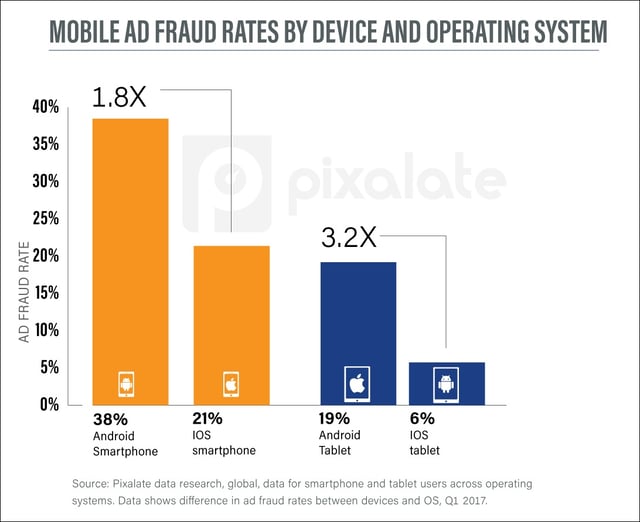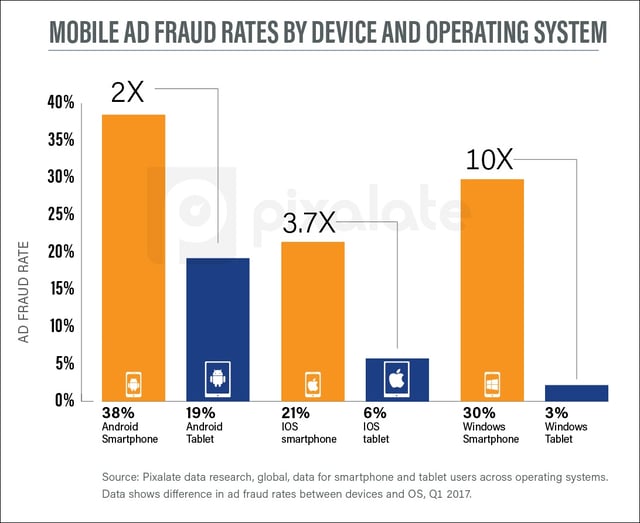
Our Q1 2017 ad fraud benchmark insights yesterday revealed that ad fraud rates can vary greatly between tablets and smartphones, both in-app and on the web.
Today’s insight uncovers that this is true across all major operating system, including Android, iOS, and Windows.
Additionally, we’ll share which operating systems are more susceptible to ad fraud.

Our study also reveals that discrepancies between ad fraud rates across the various mobile operating systems.
Android mobile advertising inventory is typically more susceptible to ad fraud when compared to Apple’s iOS because Android is an open source platform, whereas Apple is a closed system. In many ways, Android is the Wild Wild West, while Apple has stronger evaluation and monitoring criteria.

Across all operating systems — Android, iOS, and Windows — smartphone ad inventory (across web and apps) was at least 2x more likely to be fraudulent compared to tablet inventory.
Download the list of mobile platforms with the best inventory quality in March.
This post is part of an ongoing series highlighting Pixalate's Quarterly Global Ad Fraud Benchmarks for Q1 2017. Sign up for our blog to learn more.
*By entering your email address and clicking Subscribe, you are agreeing to our Terms of Use and Privacy Policy.
These Stories on Mobile
*By entering your email address and clicking Subscribe, you are agreeing to our Terms of Use and Privacy Policy.

Disclaimer: The content of this page reflects Pixalate’s opinions with respect to the factors that Pixalate believes can be useful to the digital media industry. Any proprietary data shared is grounded in Pixalate’s proprietary technology and analytics, which Pixalate is continuously evaluating and updating. Any references to outside sources should not be construed as endorsements. Pixalate’s opinions are just that - opinion, not facts or guarantees.
Per the MRC, “'Fraud' is not intended to represent fraud as defined in various laws, statutes and ordinances or as conventionally used in U.S. Court or other legal proceedings, but rather a custom definition strictly for advertising measurement purposes. Also per the MRC, “‘Invalid Traffic’ is defined generally as traffic that does not meet certain ad serving quality or completeness criteria, or otherwise does not represent legitimate ad traffic that should be included in measurement counts. Among the reasons why ad traffic may be deemed invalid is it is a result of non-human traffic (spiders, bots, etc.), or activity designed to produce fraudulent traffic.”

